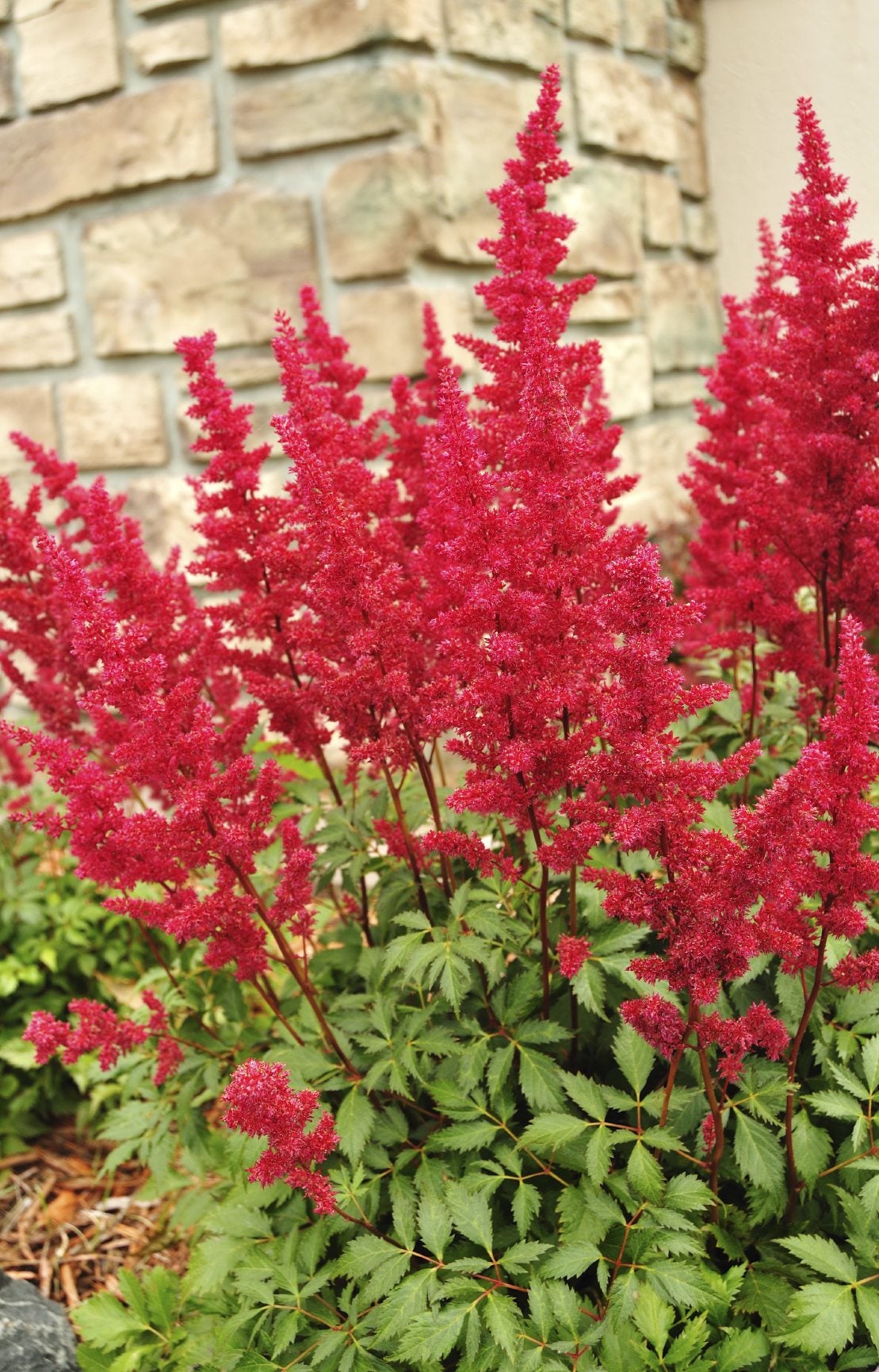Astilbe Propagation Methods – How To Propagate Astilbe Plants


Astilbe is an outstanding shade perennial with tons of charm from its lacy foliage to its fuzzy flower heads. Astilbes are planted from roots that sprout out of eyes, much like a potato. Since they grow from these root structures, it is easy to divide and propagate these plants. Division is the fastest of the astilbe propagation methods and will result in plants the following season. You can try growing seeds, but dividing astilbe is a more stable and faster method for producing plants. Knowing how to propagate astilbe is easy and adds more of these enchanting plants to your garden.
How to Propagate Astilbe with Seed
Astilbe grows from rhizomes, which produce the shoots and blooms of this lively shade plant. You may also choose to grow astilbe from seed, but the results are variable, blooms take many seasons to produce, and the plants tend to be short-lived. For faster plants and bigger bloom displays, the best way of propagating astilbe plants is through division. It is an easy process, and the results are better parent plants and babies to dot around the shady areas of your landscape. Most plants start out as a seed but due to many variables, the results may not be true to the parent plant. Also, plants that are derived from rhizomes, corms, or bulbs need many seasons to mature fully and produce flowers. This is why most gardeners choose to start such plants from purchased bulbs or rhizomes. Such starts cut the time in half or more for mature plants. Astilbe seed is available, or you can save your own. This is one of the less reliable astilbe propagation methods and the size and vigor of the resulting plants may not match that of the parent. Still, if you have free seeds, start them indoors in flats and see what the outcome will be. After all danger of frost has passed, transplant the seedlings to a protected, partially shady area of the garden in well-amended soil that is loose, nutrient-rich, and well-draining.
Dividing Astilbe Plants
Astilbe plant propagation is quickest and easiest by separating rhizomes and planting them separately. Adult plants perform better if divided every three to four years. Propagating astilbe plants through division is best done in late fall or very early spring when plants have died back or before they have sprouted. Mark the area in the garden for spring division so you can find the exact location of the rhizomes. Dig around the edges of the astilbe plant to prevent damaging the rhizomes for a better chance of getting healthy new rhizomes. Gently unearth the rhizomes and pull them away from the main body of the root structure. Choose healthy, undamaged rhizomes. Prepare the bed carefully by digging at least 6 inches (15 cm.) deep and adding compost, leaf litter, or another soil amendment. Consider the lighting of the new location. Astilbes prefer shade to partial shade and will burn in full sunlight.
Care of Newly Divided Astilbe Rhizomes
Good cultivation and care are the keys to successful astilbe plant propagation. Plant the divisions at the same depth in which they were harvested. Space rhizomes 16 to 30 inches (41-76 cm.) apart and pack the soil firmly around the new plants. Use a fertilizer with a high phosphorus and potassium number as compared to nitrogen. Keep the new plants moderately moist but not soggy. During summer, supplement moisture during dry periods. It is a good idea to use an organic layer of mulch around the planting zone to prevent weeds, conserve moisture, and enrich the soil. Keep an area around sprouts free of mulch to prevent rot and allow tender shoots to easily break free. You may see flowers in the first year or just the lacy, delicate foliage. By year two, the plumes will form, and mature, good-sized plants will be produced. Astilbe plant propagation from the rhizomes is quick and easy and you can even save the fall harvested rhizomes in well-draining containers indoors over winter for spring planting.
Sign up for the Gardening Know How newsletter today and receive a free copy of our e-book "How to Grow Delicious Tomatoes".

Bonnie Grant is a professional landscaper with a Certification in Urban Gardening. She has been gardening and writing for 15 years. A former professional chef, she has a passion for edible landscaping.